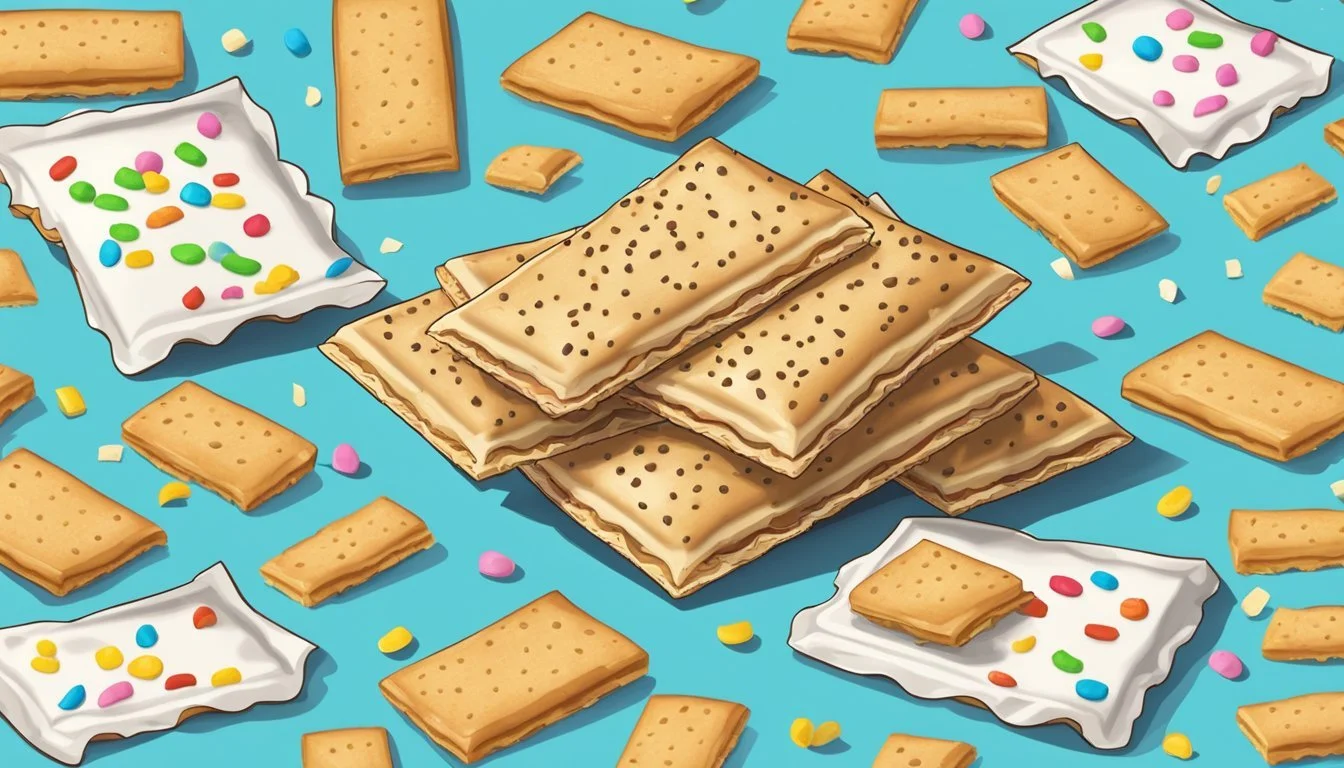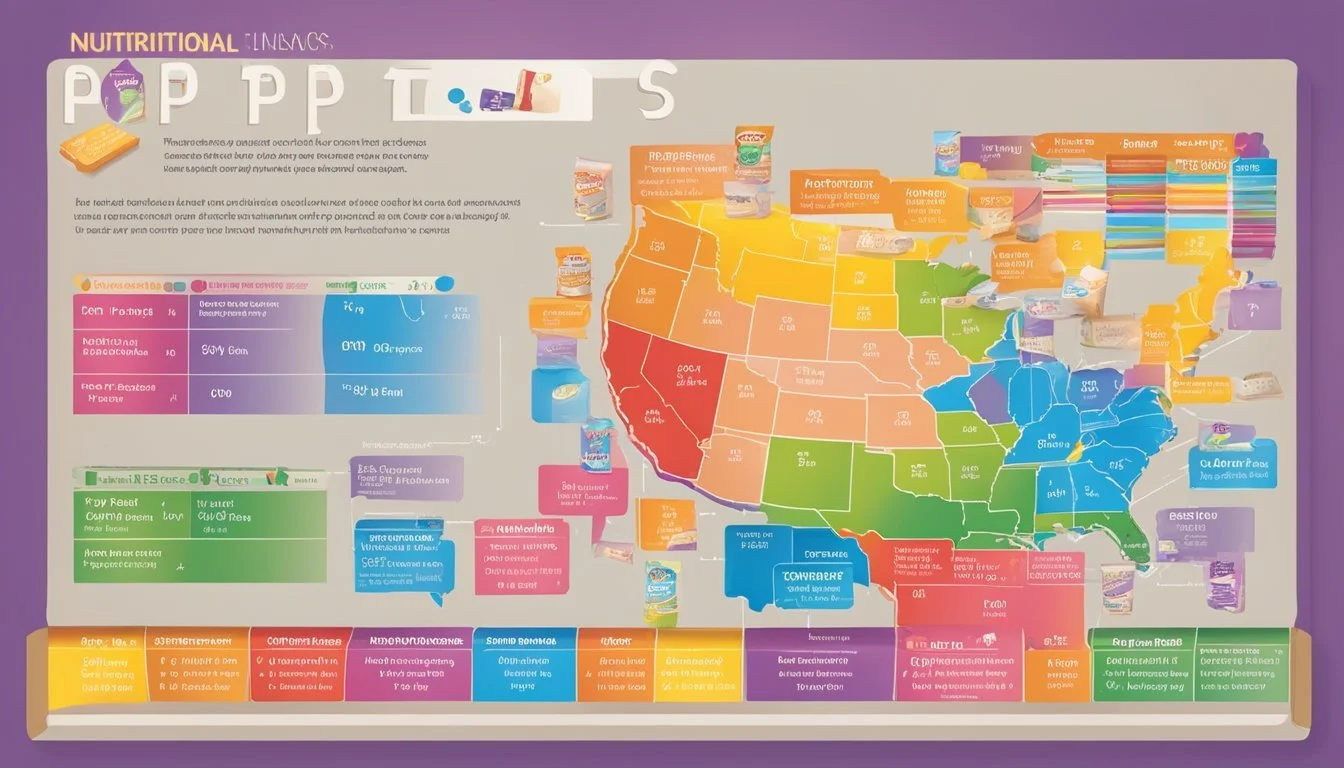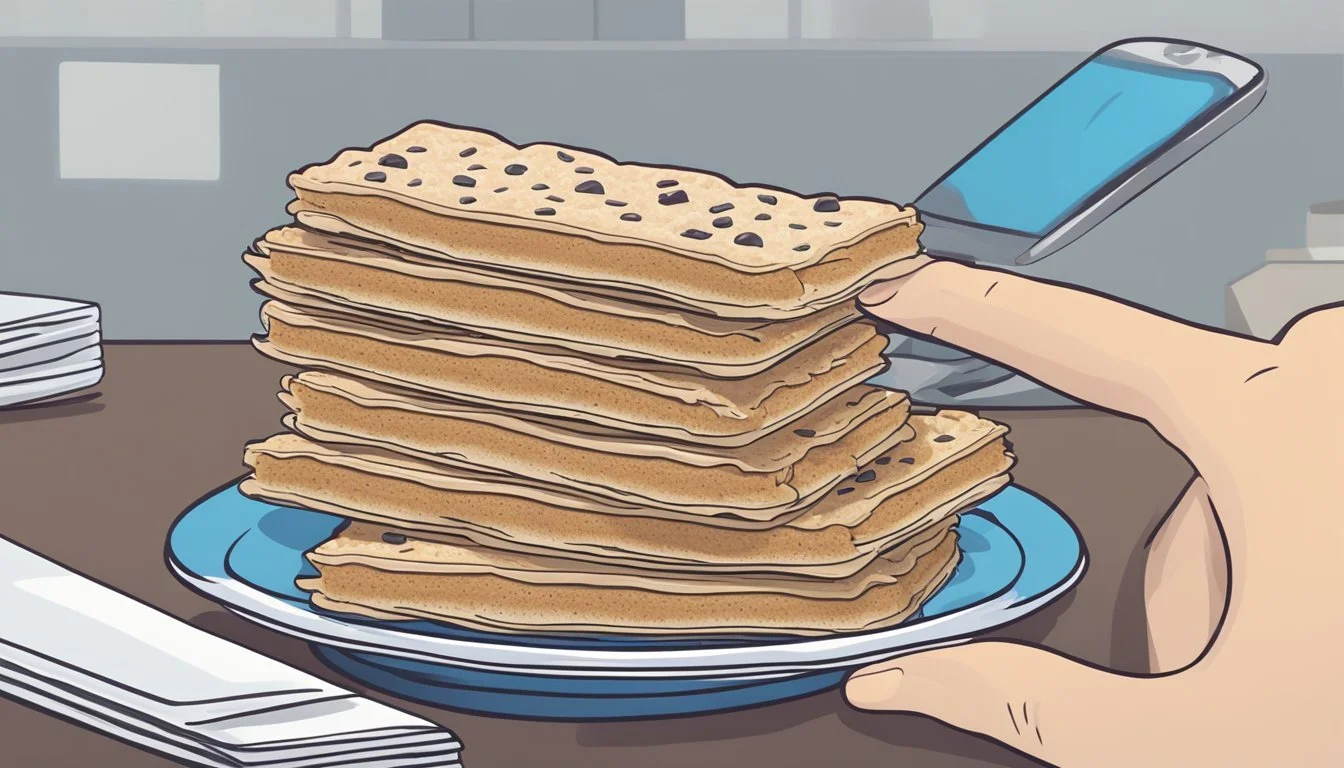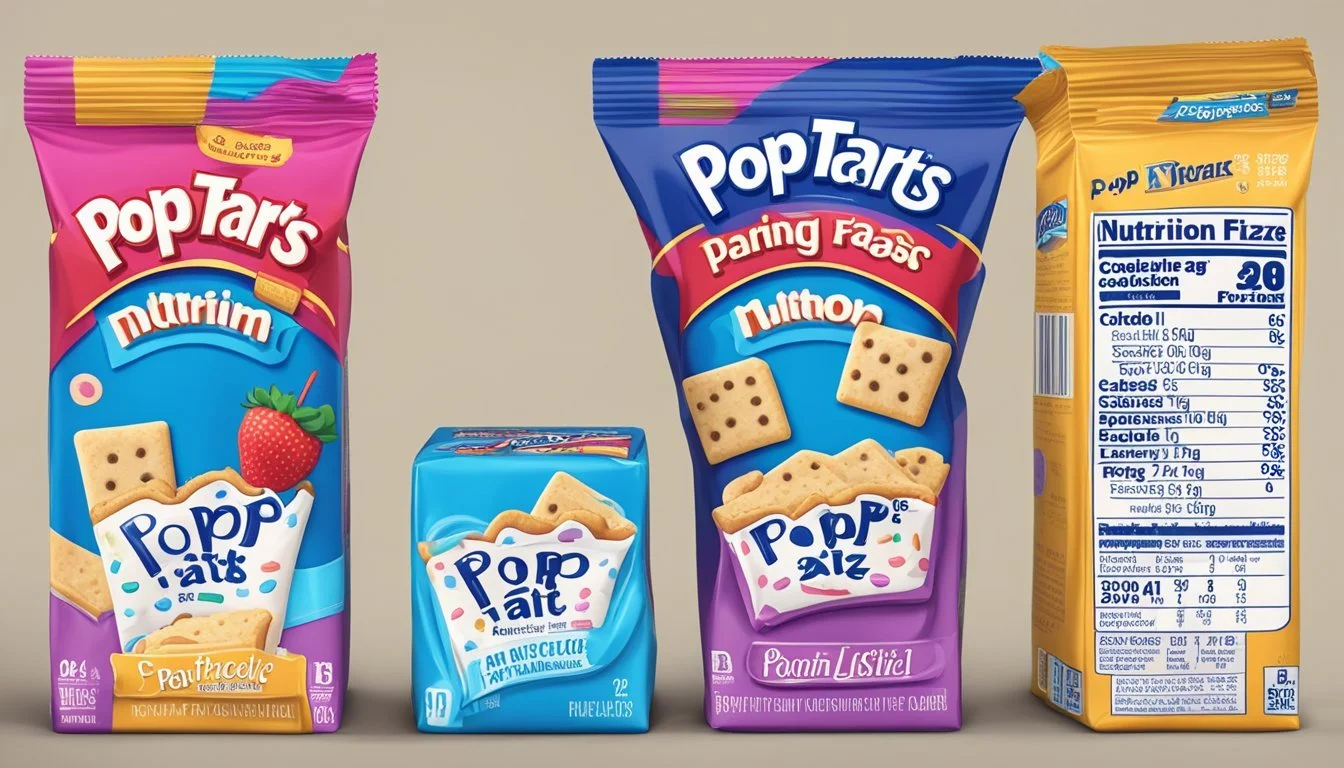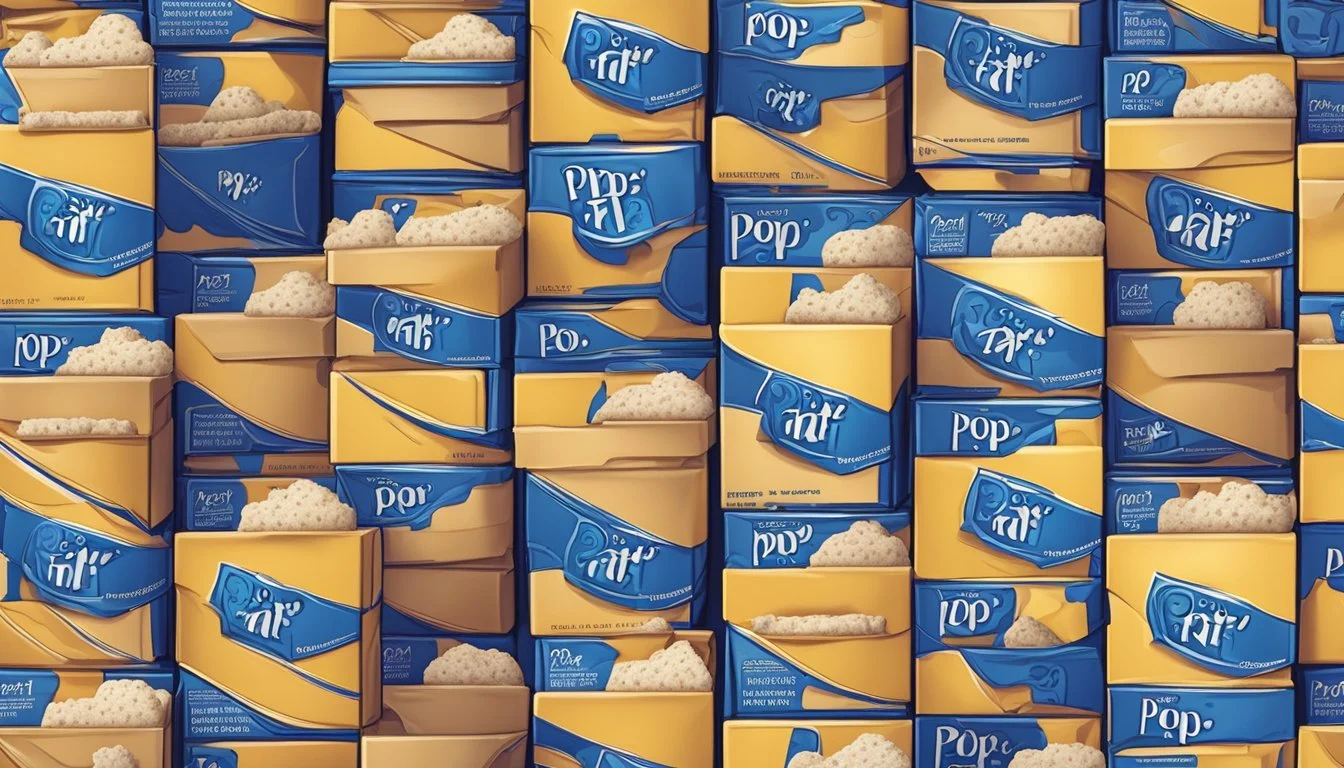How Many Servings of Pop-Tarts Per Day Exceeds Dietary Recommendations?
Determining the appropriate number of Pop-Tarts servings per day depends largely on one's individual dietary needs and the nutritional content of Pop-Tarts. A typical serving size is two pastries, and they come in various flavors, each with its own set of nutritional values. For instance, the Frosted Chocolate Fudge and Frosted Chocolate Chip Pop-Tarts contain approximately 370 and 380 calories per serving, respectively. It's important to note that Pop-Tarts are high in sugars and refined flour, offering limited nutritional benefits beyond their calorie content.
Consuming Pop-Tarts regularly or in large quantities could easily contribute to exceeding the daily caloric recommendations, especially since 2,000 calories a day is the general guideline for average nutritional needs. The ingredients in Pop-Tarts, such as added sugars and TBHQ—a food preservative, raise concerns for their potential impact on long-term health when consumed excessively. They are not typically considered a healthful choice when aiming for a balanced diet rich in vitamins, minerals, and whole grains.
Therefore, when incorporating Pop-Tarts into a daily diet, they should be viewed as an occasional treat rather than a staple food item. It is recommended to balance their intake with nutrient-dense foods that are better aligned with dietary guidelines for Americans. This approach ensures that the daily consumption of Pop-Tarts does not eclipse the recommended intake of essential nutrients necessary for maintaining overall health.
Nutritional Profile of Pop-Tarts
In this section, readers will gain a comprehensive understanding of the nutritional profile of Pop-Tarts, spanning from calorie content to specific ingredients that impact dietary considerations.
Caloric Content
Pop-Tarts' caloric content varies by flavor, but generally, one pastry contains around 190 to 210 calories. A standard serving of two pastries doubles this amount, leading to a caloric intake of approximately 380 to 420 calories.
Macronutrients
The macronutrient distribution in a serving of Pop-Tarts typically includes:
Total carbohydrate: 68g, of which:
Dietary Fiber: 1-2g
Total Sugars (including added sugars): Up to 30g
Protein: Ranges from 2 to 4 grams per serving.
Total Fat: About 5 to 9 grams, with:
Saturated Fat: 1 to 3 grams
Trans Fat: 0g
Micronutrients
While Pop-Tarts are not a significant source of micronutrients, some flavors are fortified with vitamins and minerals such as iron and a few vitamins from the B-complex group.
Ingredients and Additives
Pop-Tarts consist of a sugary filling sealed inside two layers of thin, rectangular pastry crust. They often contain several preservatives and flavor additives to maintain shelf stability and taste.
Vitamins and Minerals
Enriched flour used in Pop-Tarts may provide small amounts of folic acid and iron. Some vitamins that may be included are vitamin A, vitamin C, thiamin, riboflavin, niacin, and vitamin D.
Allergen Information
Pop-Tarts may contain allergens such as wheat and soy. They do not typically contain nuts, eggs, peanuts, fish, dairy, crustacean shellfish, (What wine goes well with shellfish?) tree nuts, or sesame; however, it's important to check the labeling for specific allergen information on individual packages.
Labeling and Packaging
Nutrition facts for Pop-Tarts can be found on their product package, including servings per container, which is typically 1 pastry (about 50g to 96g depending on the variety). Nutrition labels detail the percentages of daily values based on a 2,000 calorie diet.
Consumption Guidelines
In assessing the appropriate quantity of Pop-Tarts to consume, one should consider federal guidance, nutritional recommendations, special diets, and manufacturer serving information.
FDA Daily Values
The FDA establishes Daily Values (DV) for the intake of various nutrients. For calories, a benchmark of 2,000 calories per day is used as a reference point for general nutrition advice. Pop-Tarts vary in calorie count, generally ranging between 360 to 380 calories per serving, which consists of two pastries. It’s important to factor this into the total daily caloric intake to avoid excess consumption, which could contribute to heart disease or diabetes.
Dietary Recommendations
A balanced diet includes a variety of food groups. The USDA MyPlate guidelines suggest filling half your plate with fruits and vegetables, a quarter with grains, and a quarter with protein, along with a serving of dairy. Given that Pop-Tarts are high in sugar and calories, they should be eaten in moderation within a balanced dietary pattern.
For added sugars:
Women: 100 calories per day (25 grams)
Men: 150 calories per day (37 grams)
Special Dietary Needs
Individuals following special diets such as vegetarian or vegan lifestyles may have different nutritional requirements. For instance, the dietary guidelines recommend 2 cups of legumes per week for non-vegetarians and 6 cups weekly for vegetarians. Pop-Tarts may not meet the nutrient profiles demanded by these diets and should be treated as occasional treats rather than dietary staples.
Serving Sizes and Frequency
According to the SmartLabel™ on various Pop-Tarts products, a single serving size is two pastries. The servings per container vary, but this unit of measurement can guide consumers in understanding how much of the product they are consuming at once. To adhere to a balanced diet, Pop-Tarts should be consumed less frequently, and servings should be limited, allowing room for more nutritionally dense food throughout the day.
Pop-Tarts Varieties and Flavors
With a multitude of flavors, Pop-Tarts toaster pastries offer options ranging from classic fruit-filled varieties to nut-infused creations and limited special editions. They cater to diverse preferences and often include a frosted topping.
Classic Varieties
Pop-Tarts classics include flavors like Frosted Strawberry and Frosted Blueberry. These varieties have been a staple in households for years, offering a familiar and comforting taste experience:
Frosted Strawberry: The sweet taste of strawberry filling coupled with a frosted coating.
Frosted Blueberry: A tangy blueberry filling enveloped in a layer of sweet frosting.
Nut-Infused Varieties
Amidst their expansive flavor catalog, Pop-Tarts features several pastry varieties that incorporate nuts, expanding their appeal to those who appreciate a nutty addition to their snacks:
Frosted Peanut Butter: Combines the savory taste of peanut butter with sweet frosting.
Special Editions
Pop-Tarts periodically introduces special edition flavors, which can include unexpected combinations and seasonal inspirations. Over the years, these limited-time offerings have included innovative twists and have been met with varying levels of enthusiasm:
Pumpkin Pie (Seasonal): Evokes the flavors of the classic fall dessert.
Sugar Cookie: Mimics the sweet, buttery taste of homemade sugar cookies.
By offering a wide assortment of flavors, Pop-Tarts continues to maintain its popularity in the toaster pastry market, providing both traditional and novel options for their audience.
Preparation and Consumption Tips
When preparing Pop-Tarts, a classic toaster pastry, it's important to handle them with care to avoid overcooking. One should simply toast them for one cycle on the lowest setting of their toaster. If one opts for a microwave, they should place the Pop-Tart on a microwave-safe plate and heat it for no more than 3 seconds, letting it cool slightly before consuming.
For a homemade Pop-Tart recipe, the dough can be crafted by combining butter, milk, and cream cheese to achieve a smooth consistency before flour is added. When the dough is ready, it can be rolled out, cut into rectangles, and filled with a dollop of jam before being sealed and baked until golden brown.
As a snack, Pop-Tarts provide a quick source of carbohydrates and calories. It is recommended to enjoy them in moderation as part of a balanced diet, considering the added sugars they contain. To offset this, individuals might consider complementing their snack with a glass of water to stay hydrated or milk for added nutrients such as calcium and vitamin D.
Tips for Consumption Note Pair with Water or Milk Helps balance nutrition and maintain hydration. Consume in Moderation High in sugar and calories; be mindful of the quantity. Balance with Nutrient-Dense Food Include fruits or a protein source to diversify diet.
Consumers should be aware that although easy to prepare and tasty to eat, Pop-Tarts are not meal replacements. They should be enjoyed as part of a varied diet that includes a mix of foods rich in fiber, protein, and essential vitamins and minerals.
Choosing Healthier Alternatives
When one seeks to reduce their intake of Pop-Tarts, they might consider alternatives rich in fruits, fiber, and healthy carbs. A balanced choice comes from whole grain toast paired with nut butter. The combination offers a satisfying crunch and a creamy texture while providing necessary fiber and healthy fats. Additionally, whole grains are a more nutritious source of carbohydrates than the refined flour typically found in Pop-Tarts.
For individuals preferring a sweeter start to the day without the added sugars commonly found in pastries, oatmeal is a commendable option. It can be enhanced with fresh fruits like berries, bananas, or apples to add natural sweetness and vital nutrients. Not only does this choice pack a punch in terms of flavor, but it also offers a substantial fiber boost.
Smoothies make for a refreshing and versatile alternative. They can be tailored to one's taste and nutritional needs by blending a range of fruits—offering vitamins and fiber—with other healthful ingredients such as Greek yogurt, which provides additional protein.
Here's a quick reference for healthier alternatives:
Alternative Key Benefits Whole Grain Toast Fiber, whole carbs, nut protein Oatmeal High fiber, natural sweetness Smoothies Vitamins, fiber, customizable Greek Yogurt Protein, paired well with fruits
One should always aim to increase their intake of fruits and whole-food sources of fiber and carbohydrates while moderating their consumption of processed sugar and refined carbs. This not only supports a well-rounded diet but also assists in maintaining stable energy levels throughout the day.
Brand and Manufacturer Information
Pop-Tarts are manufactured by the Kellogg Company, which adheres to specific regulatory standards and maintains branded communication through its SmartLabel™ platform to share product information with consumers.
Kellogg's Brand Overview
Kellogg's, headquarter in Battle Creek, Michigan, is renowned for producing Pop-Tarts—a stalwart brand in its extensive product lineup. Introduced in 1964, Pop-Tarts have become a mainstay in American breakfast culture. Kellogg's commitment to transparency is evidenced through tools like Kellanova and the SmartLabel™ platform, where consumers can access detailed product information.
Regulatory Compliance
The Kellogg Company ensures that Pop-Tarts comply with the Food and Drug Administration (FDA) guidelines. This compliance includes nutritional information adherence and the Bioengineered Food Disclosure, which outlines the usage of bioengineered food ingredients. The brand's labeling denotes that certain products, like the Frosted Strawberry and Chocolate Fudge varieties, contain bioengineered ingredients and meet the current dietary guidelines provided by the USDA.
Branded Communication
Kellogg's employs various communication channels to disseminate product information, with a significant emphasis on their official branded site and SmartLabel™ pages. These platforms provide essential nutritional details, such as serving sizes and calorific values, supporting informed consumer choices. For instance, nutrition facts for Pop-Tarts indicate the number of servings per container (either one or two pastries), highlighting the consistent approach to branded communication in the company's marketing and informational materials.
*Note: The mentioned Bioengineered Food Disclosure and other specific details are based on search results provided earlier, assuming their relevance and accuracy.
Environmental and Ethical Considerations
When analyzing the environmental and ethical impacts of Pop-Tarts consumption, it is essential to consider Kellogg Company's packaging initiatives and its commitment to community and social responsibilities.
Sustainable Packaging Initiatives
Kellogg Company has been taking steps to improve its sustainability practices, particularly in the packaging of its products like Pop-Tarts. It aims to use 100% reusable, recyclable, or compostable packaging by the end of 2025. Currently, Pop-Tarts packaging is not widely recyclable, which is a concern for environmentally conscious consumers.
Community and Social Responsibility
The Kellogg Company recognizes its role in the broader community and has implemented corporate responsibility programs to address various social issues. They have focused on hunger relief and nutritious foods to promote better eating habits. However, Pop-Tarts, being a processed food, often faces scrutiny regarding its nutritional value and its impact on consumer health, particularly among children.

